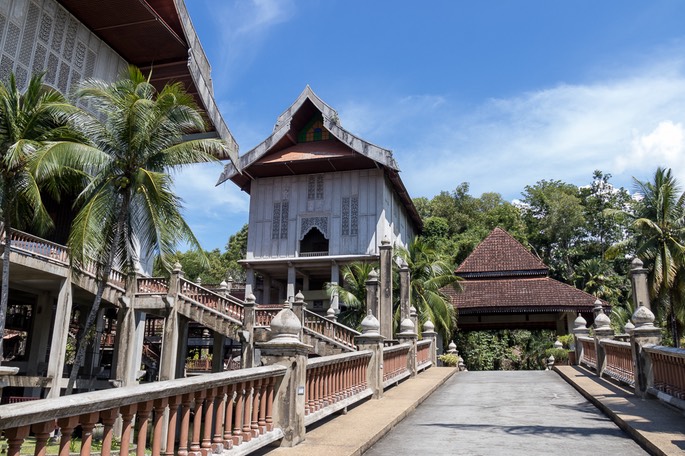
The Terengganu State Museum was clearly built to make an impression! It is a complex of huge concrete buildings in the style of classical Malay wooden architecture, and is the biggest museum complex in Southeast Asia. You enter the museum via this long hot staircase, although one would have preferred the shortcut through the covered interior.


I failed to note who this guy was flying above the main entrance, in fact I failed to notice many of the external galleries here and wondered why it is that Malaysian state museums do not provide floor plans for visitors, afterall we had to pay to enter this museum.
The story of Terengganu is pretty much the same as other states in the peninsula. They were a tributary of China, then came under the control of Srivajaya, then the Majapahit, then divided loyalties between Melaka and Siam in the 15th century, the Achenese in the 17th century, but by the 19th century it was still a vassal of Siam. And it is this relationship of the northern states of Malaysia with Siam (Thailand) which we were hoping to learn more about on this journey.
The relationship between residents of Terengganu and the British was not a happy one, so many sided with the Japanese during their invasion in December 1941. In return for the support of the Malays, the Japanese transferred sovereignty of Terengganu back to Siam, along with Kelantan, Perlis, and Kedah. After the war, the British took over once again and Terengganu became part of the Federation of Malaya until independence in 1957.
I learnt none of this history from walking around the museum; the lack of airconditioning on the 3rd and 4th floors, and the confusing signposting to other exhibition halls, all combined to make this a very frustrating visit. In contrast, Hanis really enjoyed her visit and I think this is because she already knew why and what she was looking at.
The inside of the museum is rather grand and a few traditional kites are suspended overhead. And perhaps the best part was the temporary well-curated foreign exhibition of Japanese weaponry on the ground floor.


The one object in the museum we knew we had to find was this stone shown below, dated around 1303. Terengganu was the first state in Malaya to become Islamic and this stone contains an inscription in Jawi to confirm this. It states that Terengganu is the first place for Islam to prevail, then tells you not to steal, pay your taxes, no adultery, and don’t lie. And it specifically states how to punish adulterers.

Click here to return to Day 5 - Kuala Terengganu.
Click here to return to The Great Malaysian Road Trip.
Click here to return to Travels in Malaysia 2020.
Click here to return to Helen Gray’s homepage.